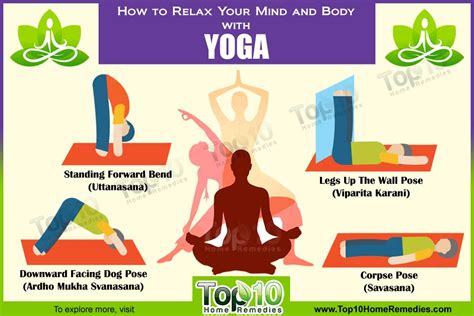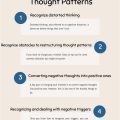Mastering Yoga Techniques to Calm the Mind and Soothe the Body: A Comprehensive Guide
Yoga, a practice rooted in ancient traditions, has become a modern-day solution for mental and physical well-being. As stress levels rise globally, more people are turning to yoga to relax their minds and bodies. However, choosing the right techniques and applying them effectively can be challenging without the right guidance. This article explores key yoga techniques designed for relaxation, their historical roots, practical applications, and how they can be implemented for different audiences.
Introduction
Yoga is more than a physical exercise; it’s a holistic practice that unites the mind, body, and spirit. From beginners to advanced practitioners, yoga offers a wide range of techniques that help reduce stress, increase mindfulness, and promote physical relaxation. However, not all yoga poses or breathing exercises are equally effective for every individual. This guide will break down the most effective techniques to relax both the mind and body, highlighting how each technique works, why it’s effective, and for whom it is most suitable.
Key Concepts
- Asana: The physical postures practiced in yoga, designed to enhance flexibility, strength, and relaxation.
- Pranayama: Breathing exercises that help control energy flow, calm the mind, and balance emotions.
- Mindfulness: Focusing on the present moment through breath awareness and body scans to release mental tension.
- Meditation: The practice of focused attention to achieve a mentally clear and emotionally calm state.
- Vinyasa: The flow of movements in sync with the breath, helping to increase mindfulness while performing physical activity.
- Restorative Yoga: A gentle yoga practice aimed at deep relaxation, using props to support the body in restful poses.
Historical Context
Yoga dates back over 5,000 years, with its origins in India. Initially, it was part of a spiritual practice aimed at unifying the mind and body to achieve higher consciousness. Over centuries, various branches of yoga evolved, including Hatha Yoga, which focuses on physical postures, and Raja Yoga, which emphasizes mental discipline. In the 20th century, yoga spread to the Western world, where it was initially viewed as a form of physical exercise. Over time, its mental health benefits became widely recognized, leading to the popularity of yoga for stress relief and relaxation in modern times.
Current State Analysis
Today, yoga is practiced globally, with millions of people incorporating it into their daily routines to manage stress and improve overall well-being. While its benefits for relaxation are well-documented, there is a growing need to tailor yoga practices to individual needs. Not everyone responds to the same techniques, and this is where the diversity of yoga techniques becomes crucial. Some may find Pranayama (breathwork) more effective than complex Asana (poses), while others benefit from deep meditation or mindfulness exercises. With the rise of mental health awareness, yoga has become an important tool in both preventive care and as a complementary treatment for anxiety, depression, and other stress-related disorders.
Practical Applications
When it comes to relaxing the mind and body through yoga, selecting the right combination of techniques is key. Below are several practices that target both mental and physical relaxation, accompanied by explanations of their use and benefits.
1. Restorative Yoga
Involves the use of props like bolsters, blankets, and blocks to support the body in restful poses for extended periods. These poses help release deep-seated tension in muscles and joints.
2. Breathing Techniques (Pranayama)
Examples include Nadi Shodhana (Alternate Nostril Breathing) and Ujjayi (Victorious Breath), both of which calm the nervous system and help bring the body into a state of balance.
3. Meditation and Mindfulness
Practices like body scan meditations or focused breathing can relieve mental stress. Techniques such as Yoga Nidra (yogic sleep) guide practitioners into a deep state of relaxation.
4. Yin Yoga
A slow-paced style of yoga with poses held for long periods, allowing the practitioner to stretch deeper into the muscles and fascia, reducing tension.
| Technique | Primary Benefit | Level of Intensity | Who Benefits Most |
|---|---|---|---|
| Restorative Yoga | Deep relaxation | Low | Individuals with high stress, chronic pain, or fatigue |
| Pranayama | Emotional balance | Moderate | Those seeking mental clarity or emotional stability |
| Yin Yoga | Physical tension release | Moderate | Athletes, individuals with tight muscles or limited flexibility |
| Meditation | Mental calmness | Low | Anyone experiencing anxiety or mental fatigue |
Case Studies
Several real-world examples highlight the effectiveness of yoga in promoting relaxation. A notable case involved a group of high-stress corporate employees who engaged in weekly restorative yoga sessions for eight weeks. The results showed significant reductions in perceived stress levels, improved sleep quality, and enhanced emotional resilience.
Stakeholder Analysis
Yoga’s effectiveness for relaxation is recognized across various sectors. In corporate settings, it’s used as a stress management tool. In healthcare, it complements treatments for mental health conditions. For athletes, yoga enhances recovery and reduces muscle tension, while in education, yoga is increasingly incorporated into curriculums to help students manage academic pressures.
Implementation Guidelines
For those new to yoga or seeking to implement relaxation techniques into their routine, starting with gentle practices like Restorative Yoga and Pranayama is recommended. Instructors should ensure that participants understand how to use props and adjust poses for their body type. Classes or personal sessions should begin with a focus on breath control, slowly introducing more physically demanding techniques as the practitioner becomes more comfortable.
Ethical Considerations
In the commercialization of yoga, the focus can sometimes shift from mental well-being to physical fitness, potentially alienating those who seek it for relaxation. Ethical yoga practices emphasize inclusivity, making sure that individuals of all body types, abilities, and backgrounds feel welcome. Additionally, instructors should prioritize the mental and emotional safety of their students, ensuring that they provide a supportive environment for relaxation.
Limitations and Future Research
Despite its widespread use, more research is needed to better understand the full scope of yoga’s benefits for mental health, particularly in clinical settings. Current studies often rely on self-reported data, which can be subjective. Future research should focus on the long-term effects of yoga on the nervous system and how specific techniques can be tailored to different populations. Limitations also arise when yoga is improperly taught, leading to strain or injury. Ensuring proper instruction and awareness of limitations is crucial to its effectiveness.
Expert Commentary
Experts in the field of yoga and mental health agree that yoga’s versatility is its greatest strength. Dr. Anne Taylor, a renowned mental health specialist, points out that “Yoga is one of the few practices that effectively bridges the gap between physical and mental well-being. Its ability to target both areas makes it indispensable for stress relief in today’s fast-paced world.” Similarly, yoga instructor and therapist Paul Johnson adds, “For those struggling with anxiety or tension, a carefully selected yoga routine can transform daily life.”








